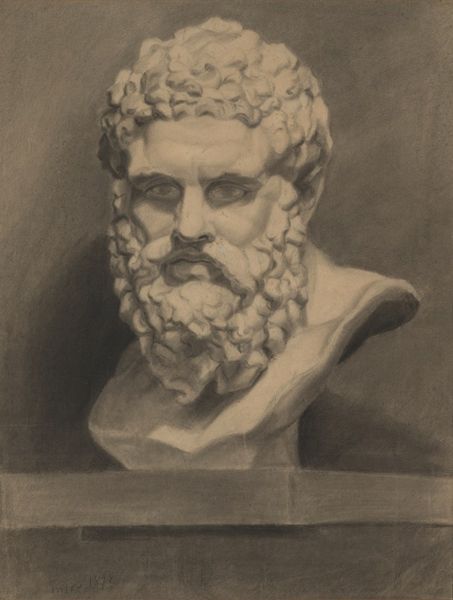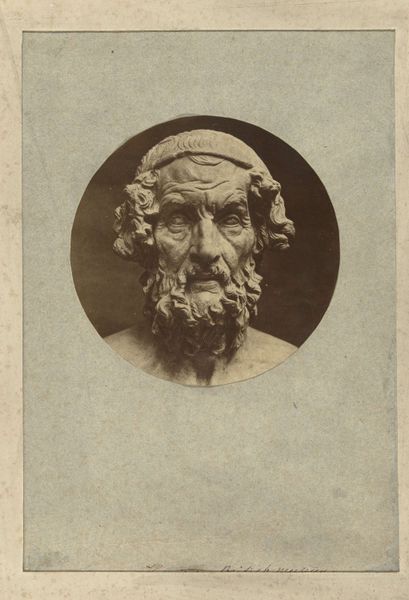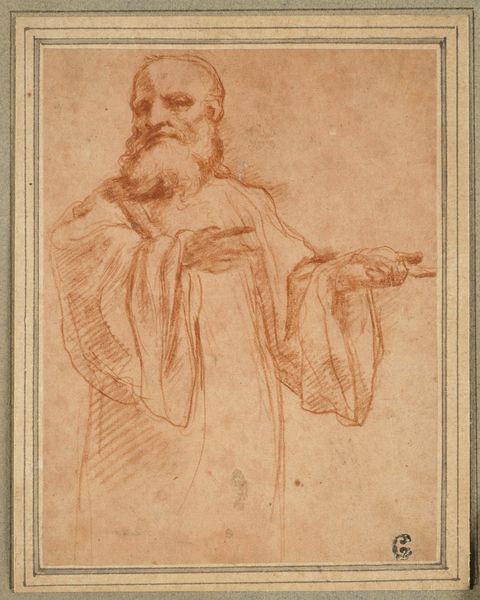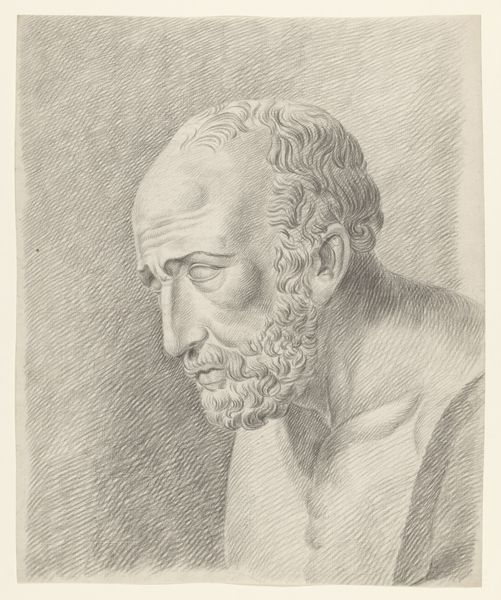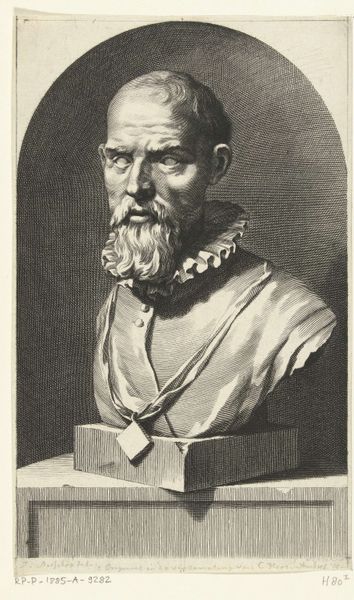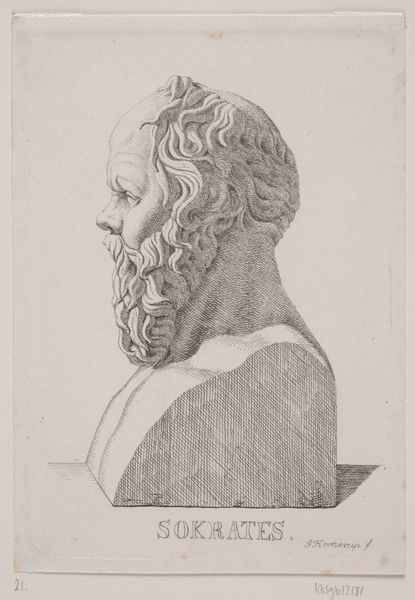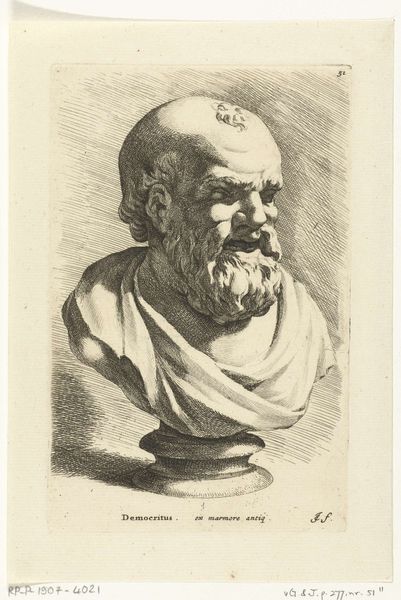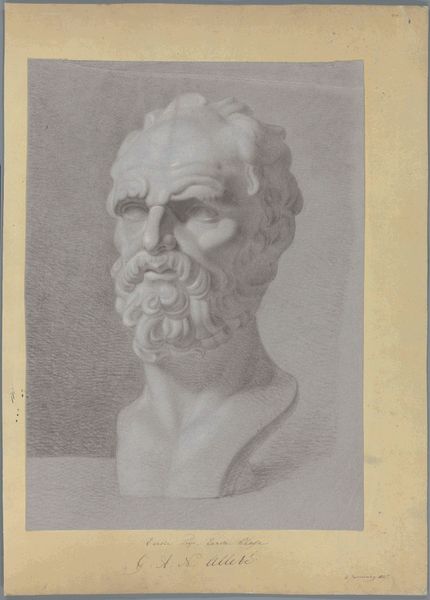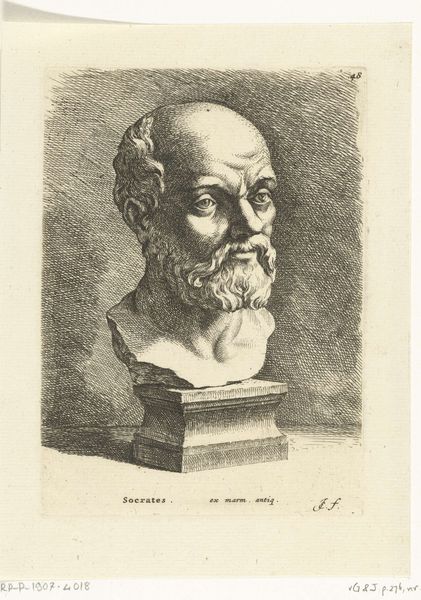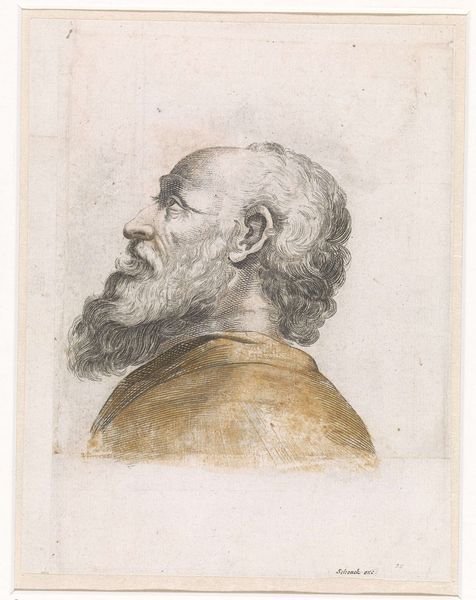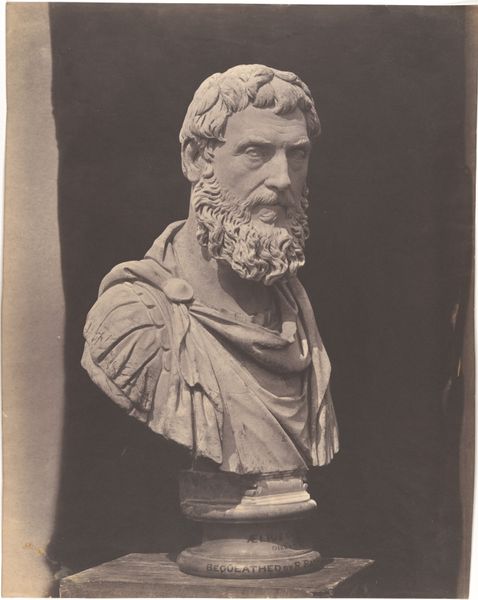
drawing, ink
#
portrait
#
drawing
#
baroque
#
caricature
#
charcoal drawing
#
portrait reference
#
ink
#
portrait drawing
#
academic-art
Dimensions: height 212 mm, width 133 mm
Copyright: Rijks Museum: Open Domain
Curator: Here we have a drawing by Jan de Bisschop, dating from between 1650 and 1664. It depicts Pieter Adriaensz. van der Werff. The artwork utilizes both ink and charcoal, a mixed media approach on paper. Editor: The sepia tones immediately give it a feeling of old documents and archives, a very serious almost severe portrait. The stark, almost monochrome palette keeps our attention solely on the figure, its form and lines. Curator: Indeed. Bisschop's approach here reflects a broader artistic trend of academic art. Notice the detail given to van der Werff’s ruff collar and the textures in the beard, elements certainly intended to convey his status. As a "portrait reference", this would likely be used to create an idealized, or, at least, accurate representation to immortalize van der Werff’s likeness. Editor: I wonder about the choice to depict a bust, a classical form almost immediately associated with the Roman elite and the kind of power and authority they wanted to project. This piece begs questions about class, representation and power, the symbols that have always perpetuated exclusivity. Curator: Precisely. The choice isn't merely aesthetic. Depicting him as a bust links him visually to a lineage of power and influence. Bisschop likely understood these visual cues, embedding them in the drawing for contemporary audiences, signaling van der Werff's significance within the community. It reflects the artistic conventions and the socio-political climate that shaped the work. Editor: This work is clearly intended to reinforce prevailing hierarchies. The crisp lines almost seem to reinforce these constructed ideas of class. However, considering the time and history, does it perhaps offer space for contemporary viewers to consider and perhaps even subvert them? Curator: I believe it can. As a document of its time, it allows us to examine the values and power structures inherent in Dutch society during that period. It becomes a focal point for discussing historical and contemporary power dynamics. Editor: A worthwhile discussion indeed, a complex visual and social intersection presented through careful use of historical form. Curator: Agreed, offering an insightful glimpse into artistic practices and societal values of the time.
Comments
No comments
Be the first to comment and join the conversation on the ultimate creative platform.
